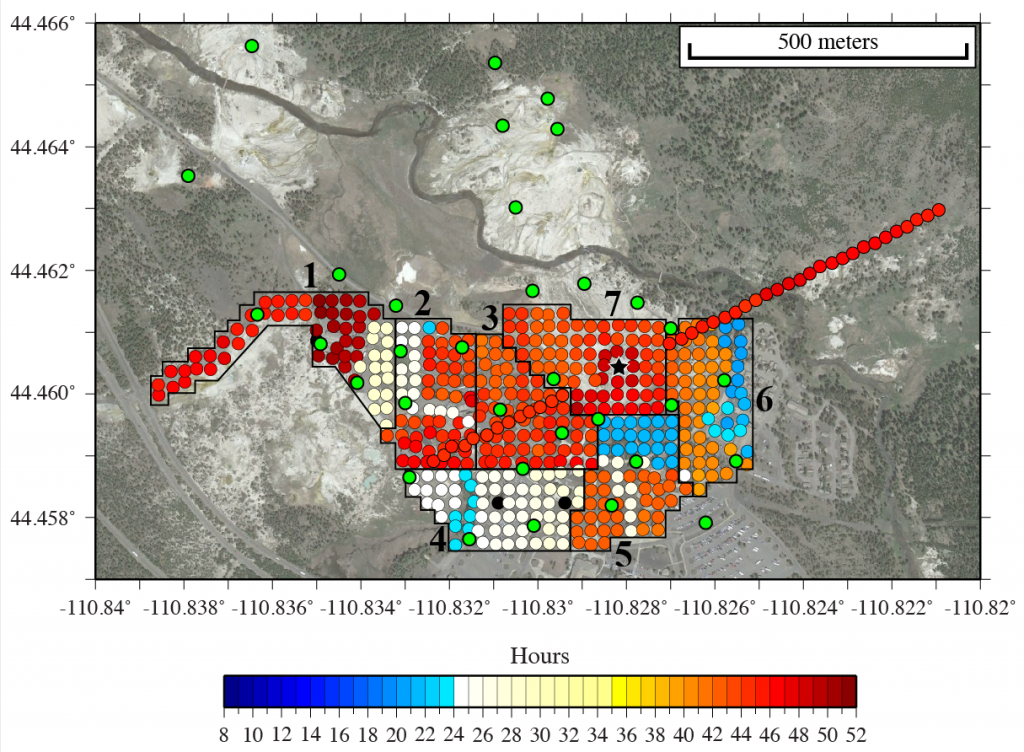Updated March 10, 2021 with additional information on the Magna Sequence here.

How many earthquakes have we had in the area?
The University of Utah Seismograph Stations (UUSS) has located 2,590 earthquakes that occurred in the Magna, Utah, area from March 18 through February 28, 2021(Figure 1). The largest of these earthquakes was the magnitude (M) 5.7 mainshock that occurred at 7:09 am MDT on Wednesday, March 18, 2020. The remaining 2,589 earthquakes are aftershocks. The largest aftershocks were two M 4.6 events that occurred at 8:02 am and 1:12 pm on Wednesday, March 18, 2020. A M 4.2 aftershocks occurred on April 14 and 17th which were widely felt along the Wastach Front. There have been 36 aftershocks of M 3 and larger. We continue to locate new earthquakes as they occur.

What is a Foreshock, Mainshock, or Aftershock?
Mainshocks, foreshocks, and aftershocks are all earthquakes. The mainshock is the largest magnitude earthquake in an earthquake sequence. It may be the first event in the sequence or occur later. The earthquakes in the sequence that occur before the mainshock are called foreshocks and the ones that occur after are called aftershocks. Sometimes an earthquake that is initially called the mainshock is reclassified as a foreshock because a larger earthquake follows it. An earthquake sequence is a group of events that occur close together in time in the same area.
What is the difference between UUSS and USGS?
The University of Utah Seismograph Stations (UUSS) and the U.S. Geological Survey (USGS) are partner agencies. All seismic data from the Utah region are collected and initially processed by UUSS. The resulting earthquake locations, magnitudes, and ShakeMaps are submitted to the USGS, which serves the information on a USGS website. USGS personnel often provide additional information on their website related to how the earthquake ruptured, how widely the earthquake was felt, the potential economic and life impacts, and the chances of aftershocks and landslides. As members of the Advanced National Seismic System (ANSS), UUSS and USGS work together to provide the most accurate and complete information about earthquakes in the Utah region.
We had a 5.7 earthquake, what are the percentages of having a larger earthquake soon?
Most likely, the 5.7 earthquake will end up being the biggest earthquake in this sequence and so it will be called the mainshock. There is a small chance, roughly one-in-twenty (5%), that a larger earthquake will occur in the next 5-6 days after the mainshock. In that case, the 5.7 earthquake would be redesignated as a foreshock, and the new, larger earthquake will be called the mainshock. A “larger” earthquake means any earthquake bigger than the one that just occurred, even if it is only 0.1 magnitude units bigger. The probability of an earthquake being a foreshock to an earthquake that is one or two magnitude units larger is much smaller than one-in-twenty.
How long did the mainshock last?
How long you felt the shaking would depends on where you were. For the
Magna Earthquake, if you were downtown, the strongest shaking lasted around 4-6 sec. However, the shaking was strong enough to be felt for about 20 sec.
Will this delay or trigger “the big one?”
No, small earthquakes do not relieve enough stress in the earth to reduce the likelihood of a large earthquake. We are still at risk of a magnitude 7-7.5 earthquake (the “Big One”) occurring somewhere along the Wasatch fault. The risk is similar to what it was before the Magna sequence.
How will I be notified of the next earthquake?
Anyone can sign up for Earthquake Notification Service (ENS) and receive emails or text messages about earthquakes as the locations are published. You may set up your own geographic area and magnitude threshold. All UUSS earthquake locations are sent out via the ENS system. Sign up here.
Will the ground open up or Fracture from the 5.7 earthquake?
It is unlikely for the fault rupture from the 5.7 earthquake to reach all the way to the surface and create what we call a scarp. It is possible that shaking from the 5.7 created liquefaction features at the surface near the epicenter.
Why can’t Utah get a M9.0 Earthquake?
The bigger an earthquake is, the more space on a fault it takes up. The faults in Utah simply are not big enough to accommodate an M9 earthquake.
How does the earthquake depth affect the shaking and how do you measure the depth?
The shallower the depth of an earthquake, the stronger the shaking will be near the epicenter; however, the strength of shaking will fall off more rapidly away from the epicenter. It is the same idea as aiming a flashlight at a wall and walking toward the wall. The closer you get to the wall the more intense the light becomes, but it takes up a smaller area. Earthquake depth is measured from the arrival times of seismic waves, similar to how the epicenter is determined.
Are earthquakes more common now?
No. There is no evidence for change in the overall rate that earthquakes occur.
More information from Earthquakes.utah.gov
What can I do to be prepared?
An excellent source of information on earthquake preparedness is the publication “Putting Down Roots in Earthquake Country”.










 On February 26, 2016,
On February 26, 2016, 